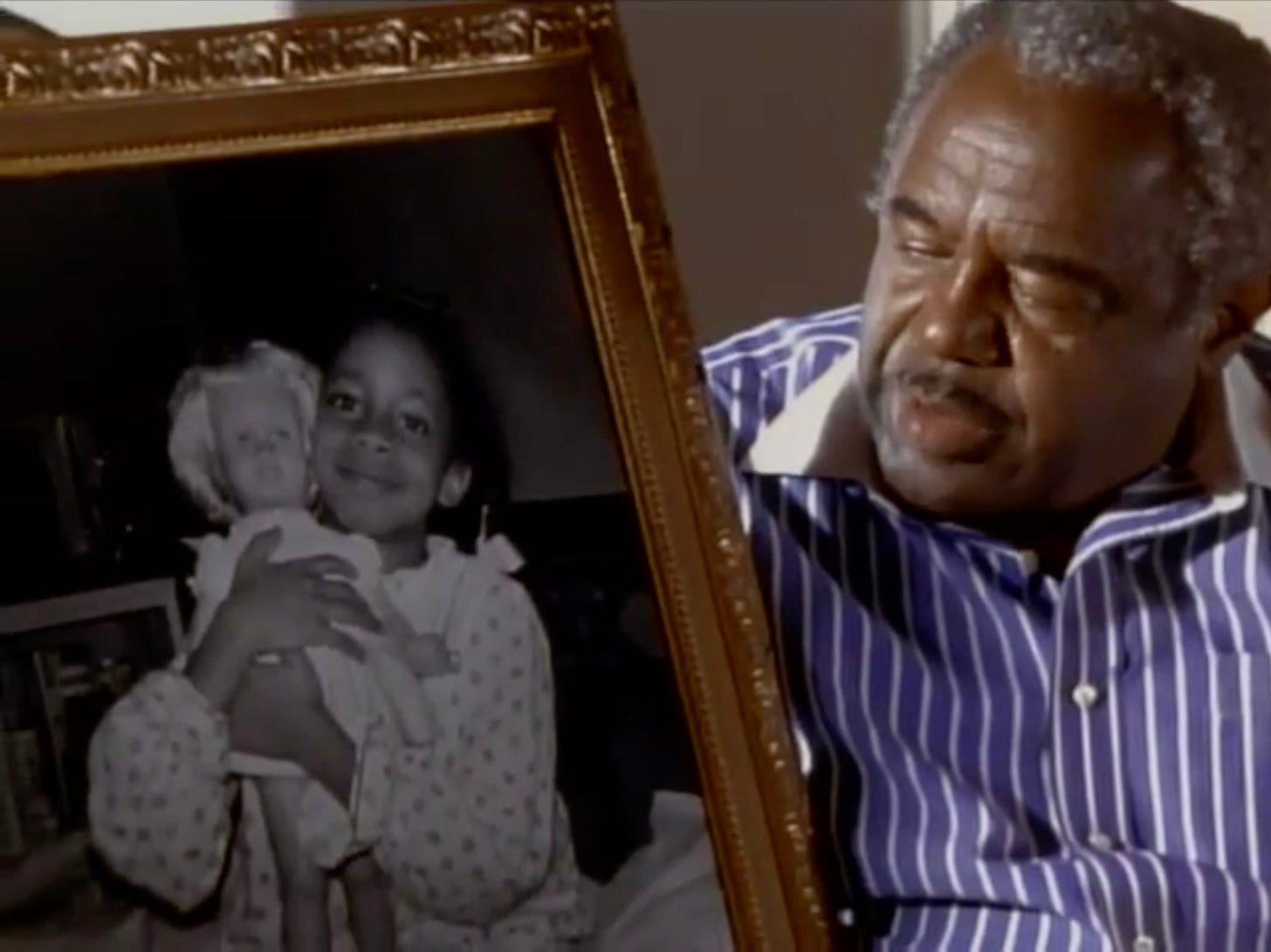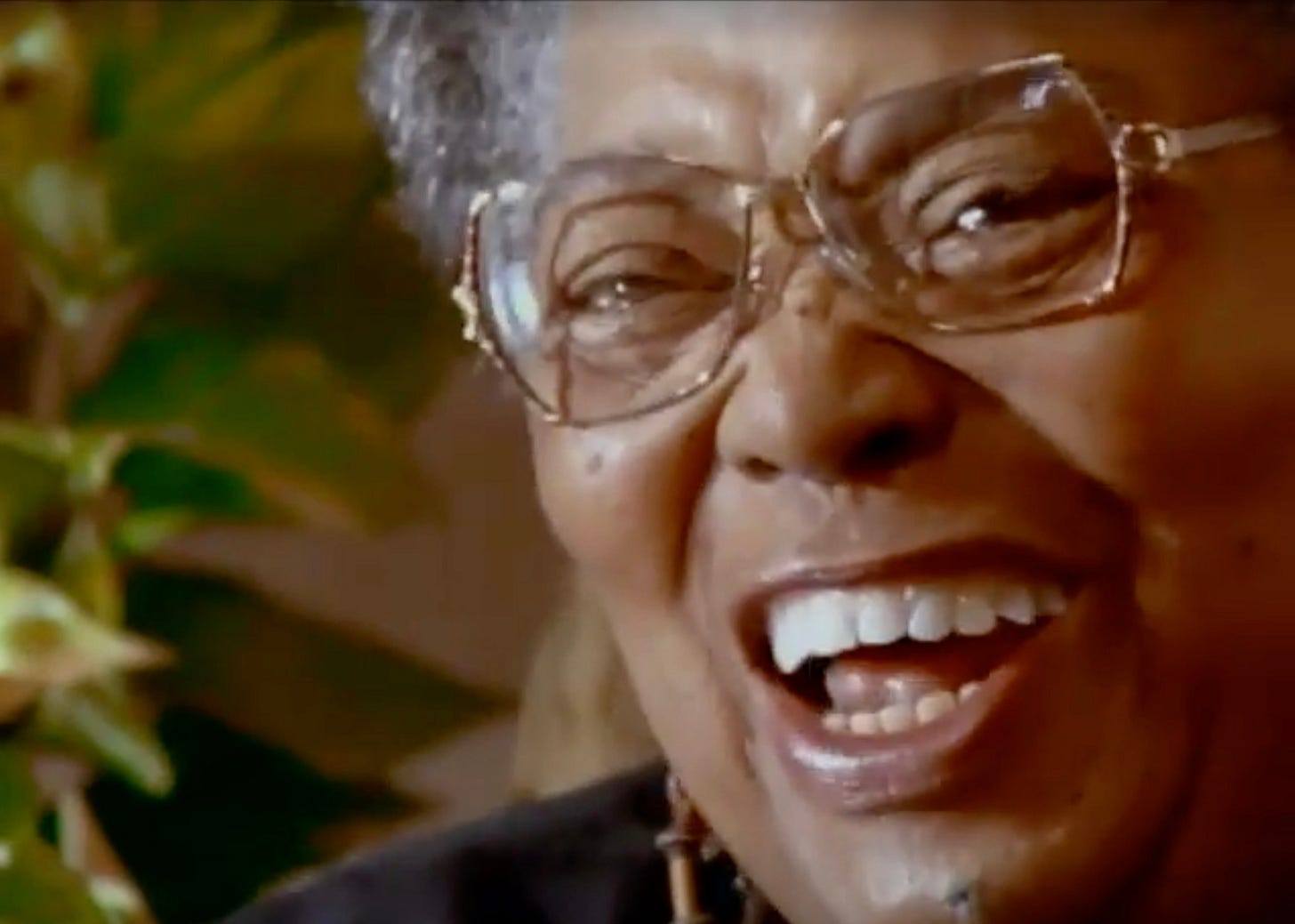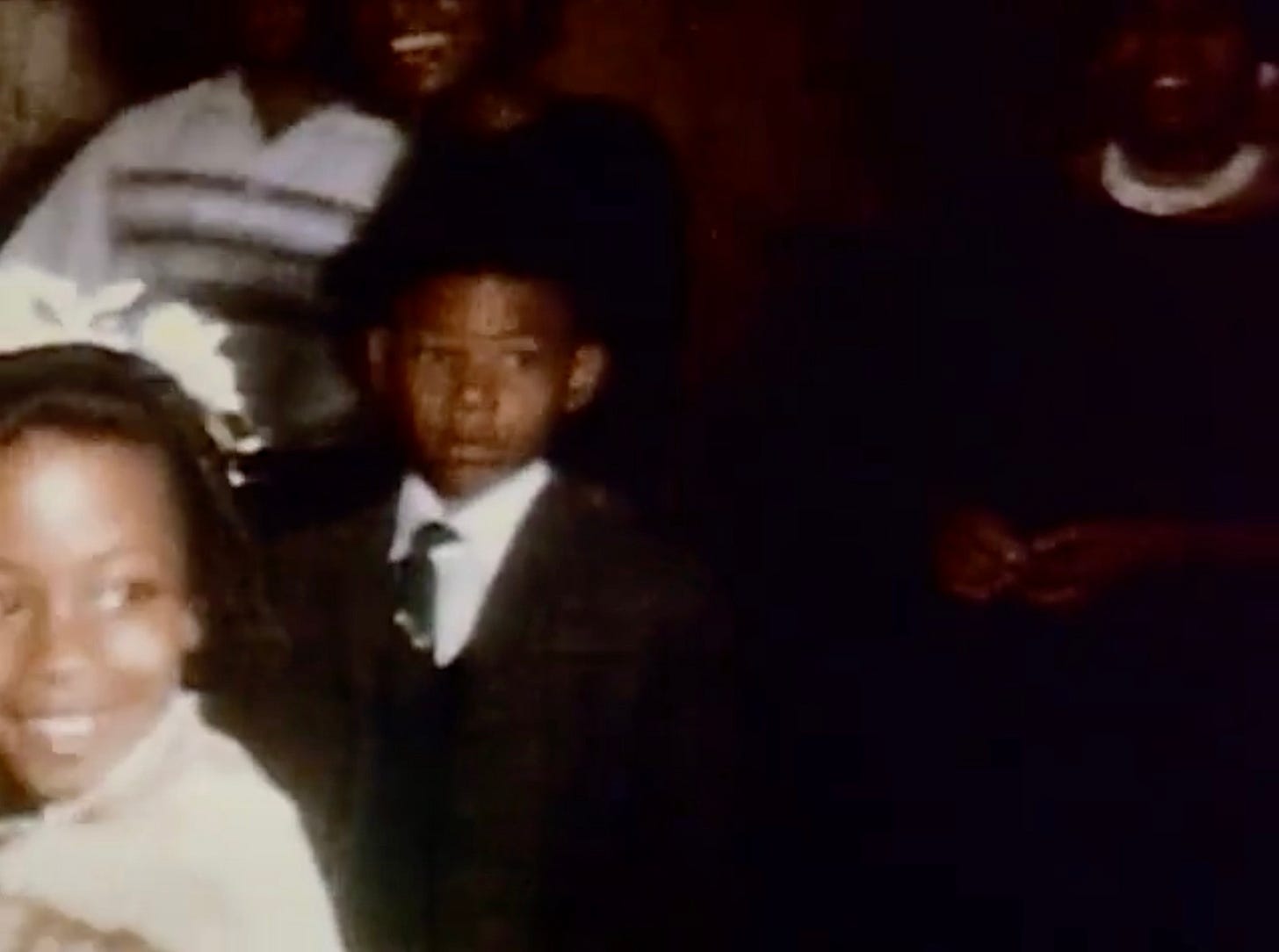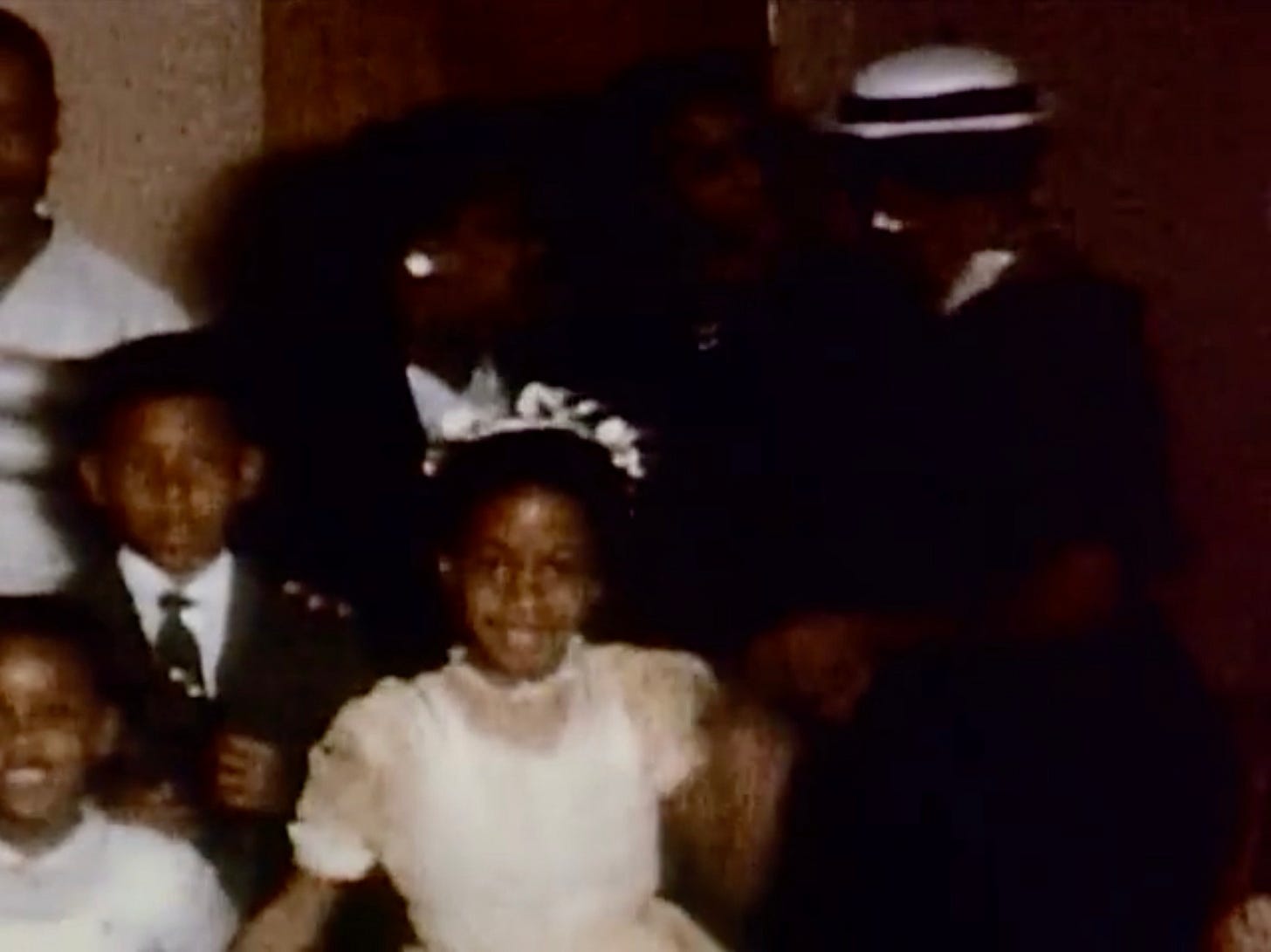On Spike Lee's 4 Little Girls
The work on mourning and memory in Spike Lee’s 4 Little Girls is really astonishing.
I think it’s always important to note that Lee is an independent filmmaker, one who has done so much with very little, and has helped make and sustain the career of so many Black actors. But he’s also, maybe unexpectedly, a masterful documentary filmmaker. In fact, were I to be honest and push a thesis, I’d say he’s at his best as a documentary maker. All the work is astonishing.
Part of what I like so much about his work in documentary is his withdrawal from the camera, either literally (his face and voice don’t appear, except very briefly) or as someone guiding the moment. Instead, as I discuss in this podcasted process piece, Lee lets witness itself do the work.
4 Little Girls does not feature Lee at all, until the very last scene when he stops and asks Alpha Robertson, whose voice and presence is overwhelming and full of so much gravity across the film, if she “still gets angry.” There’s a moment just after he asks where she teases him a bit with a word and smile about interrogating her, and Lee says “I’m not trying to be Mike Wallace” and she says immediately “Or Ed Bradley.” He laughs and says yes, Ed Bradley. An instruction there, playfully delivered: this is a Black moment of mourning and testimony, let’s keep the joke Black too. Lee - you can feel it, he laughs at himself and says yes, please, this correction.
I’m adding four screenshots here. Four amazing moments that close the film.
There is Chris McNair, the father of Denise McNair, holding a photograph he took of his daughter. Her dress was wrinkled that day, he says, but she felt pretty and begged “Daddy, take a picture of me!”
He didn’t have his camera, so he used her little kid camera. “The negative was overexposed, so I didn’t do anything with it until after she died.” Then he details quickly how he worked over the negative to make it a photograph. It is meticulously framed and the rendering is beautiful. It shows how McNair has skills and technique; that is super important to me, a quiet reveal of his wide humanity in the most everyday sense. It also tells us how this work on the negative, to produce a memory piece of his lost daughter out of overexposed film that needed care and cultivation, was work of mourning. “It’s a good photograph, that’s why I framed it too” he adds, because the father wants us to know how his mourning meant the need to make something beautiful.
This reminds me of how we want to look nice at a funeral for the dead, not for the living. But here reversed, wanting the dead to be made a portrait of the beautiful and the vibrant and the ecstatic. Making that beauty out of something that was not ready-made for a beautiful memory? For me, that is set alongside the scene from Chi-Raq in which Irene, played by Jennifer Hudson, weeps while cleaning blood from the sidewalk where her child was murdered. But instead of lifting the blood from its public spectacle and into the privacy of pain, Chris McNair is lifting light out of what’s lost in over exposure - the too much light that it brought back to balance in the father’s craft, the father’s labor, the father’s commitment. That is mourning put to work.
Mourning is not reconciliation.
From this scene with Chris McNair, Lee cuts to a bit from Junie Collins, the sister of Addie Mae, one of the four little girls murdered in the church bombing. Junie Collins is a singular figure in the documentary. She is unprocessed trauma, she is the sense of memory that has not worked through mourning and cannot locate sadness and loss in a processed representation; Junie still lives the immediacy and reminds us that mourning is not natural, it does not proceed with the unfolding of time, but is instead something that marks the aftermath of Black death and dying with the other side of Black humanity: pain that does not go away, melancholia. Junie, we’ve learned and know, identified her sister Addie Mae, at the morgue. The bomb decapitated her sister. Something are unmournable. Some things make for persistent melancholy. Her language is religious: “Just like there’s a God of love, there is a God of evil.”
Junie is also everyone in her singular function. It’s ironic, maybe, but it’s also reality. We hear Chris McNair describe how art made mourning and memory work. It’s an amazing self-articulation, that whole scene. But he’s also Junie. He also has what is un-mournable.
The final testimony is Junie and Chris at once, but in probably the most important person in the film. Alpha Robertson, Carole’s mother, talks about mourning her daughter, and also about what she has to be thankful for. Life goes on. This is such a difficult truth. Catastrophic loss does not mean you cease being a wife, a mother to two other children, a grandmother, a great-grandmother. When she lists off her living family, a daughter and son, two grandchildren, four great-grandchildren, you can see her stop herself. We about heard the whole story of all those babies with photos and stories and veneration. Those people are her life. But she stops herself. Death is also her life, and what Lee is there to discuss. She stops herself because that is the limit of what mourning can do. Lee intervenes, the only time he speaks in the film: “Do you still get angry?”
Robertson gives an incredibly intimate and real response. “It comes out in ways I’m not conscious of…” and lets that hang. We sit with it. We sit with what it means for this gorgeous old woman, whose voice manages to boom and resonate even as it is barely audible at times (Lee really honors her that way, this is cinema doing cinema work), to list with such beaming pride and pleasure what she’s thankful for and then stop and say it: I’m also controlled by a rage that will never go away. There is no reconciliation to that. It is like a stone that cannot be digested. A stone that sits in her throat, and garbles her speech even as she is more articulate than anyone on earth. A stone that defines Junie Collins’ struggles to live on, a stone that remains the ghost in the photograph of Denise McNair and her excitement. “Daddy, take a picture of me!” That is so beautiful to say and remember. It also draws the stone out between us all: daddy take a picture of me, the other pictures of me will be too awful for words. The McNairs live with both pictures. Lee makes sure we live with both pictures too, not in a moment of identification (god no, never), but in the insistence that this is our ghost too. Our beauty too. Our too much adorable, our too much pain.
Our too much. This closes the film.
My final screenshot here, and I’m including two, is home movie footage.
The smiles and spinning around of children, they way they bring such joy and minor irritation to the adults in the background, everyone dressed in Sunday best, says so much about how Lee wants us to understand the contradiction of Black childhood. This joy, this pleasure, this frivolity, this sweetness, but also what we saw just minutes earlier, the photos from the morgue and what a bomb does to a child’s body. The contraction of swirling spinning sweetness and the refusal of that sweetness to move a world made of antiblack racism. Those two exist at the same time. Irreconcilable sure, but that is the distortion of possibility and actuality made by our world. A world that is intraracial (the pleasures of Black people gathered together) and interracial (the cruelties of an antiblack world that wants to destroy that gathering, that pleasure). In fact, that contradiction is the entire meaning of the bombing for Lee, the meaning of mourning and rage held at the same time because antiblack racism is voracious and never satisfied.
In a stunning choice, Lee decides to put autopsy photos, however quickly cycled through, in the film at a key moment. I discuss it in this podcasted process piece. It is worth discussion, the ethics of this decision, but I think it is done with care and sensitivity in order to say something important.
4 Little Girls is such a difficult film. But such a necessary one.
I’m so thankful for my students that semester, fall 2022, and from or for this week in particular. They were not afraid to pound the desk in rage or leave the room to cry or sit with us and talk through tears. It assured me of what I always say: art is not a luxury. Art is everything and we need it now more than ever. Actually, we always needed it in just this way.








